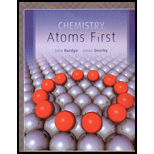
(a)
Interpretation: For the given reactions, abbreviated forms should be written.
Concept Introduction:
- Nuclear reaction can be written in the shorthand notation with the parentheses. Bombarding particle, that is projectile can be represented as first symbol in the parentheses and the emitted particle that is ejectile which can be represented as the second particle in the parentheses.
Parent nucleus and daughter nucleus can be represented in the front part of the parentheses and back part of the parentheses respectively.
To write: The abbreviated form of the given nuclear reaction
(a)
Answer to Problem 20.37QP
Explanation of Solution
Nuclear reaction can be written in the shorthand notation with the parentheses. Bombarding particle, that is projectile can be represented as first symbol in the parentheses and the emitted particle that is ejectile which can be represented as the second particle in the parentheses. Parent nucleus and daughter nucleus can be represented in the front part of the parentheses and back part of the parentheses respectively. So for the nuclear reaction, short hand notation will be in this form that is,
For the given nuclear reaction b,
So, the shorthand notation for the given reaction is,
(b)
Interpretation: For the given reactions, abbreviated forms should be written.
Concept Introduction:
- Nuclear reaction can be written in the shorthand notation with the parentheses. Bombarding particle, that is projectile can be represented as first symbol in the parentheses and the emitted particle that is ejectile which can be represented as the second particle in the parentheses.
Parent nucleus and daughter nucleus can be represented in the front part of the parentheses and back part of the parentheses respectively.
To write: The abbreviated form of the given nuclear reaction
(b)
Answer to Problem 20.37QP
Explanation of Solution
Nuclear reaction can be written in the shorthand notation with the parentheses. Bombarding particle, that is projectile can be represented as first symbol in the parentheses and the emitted particle that is ejectile which can be represented as the second particle in the parentheses. Parent nucleus and daughter nucleus can be represented in the front part of the parentheses and back part of the parentheses respectively. So for the nuclear reaction, short hand notation will be in this form that is,
For the given nuclear reaction b,
So, the shorthand notation for the given reaction is,
(c)
Interpretation: For the given reactions, abbreviated forms should be written.
Concept Introduction:
- Nuclear reaction can be written in the shorthand notation with the parentheses. Bombarding particle, that is projectile can be represented as first symbol in the parentheses and the emitted particle that is ejectile which can be represented as the second particle in the parentheses.
Parent nucleus and daughter nucleus can be represented in the front part of the parentheses and back part of the parentheses respectively.
To write: The abbreviated form of the given nuclear reaction
(c)
Answer to Problem 20.37QP
Explanation of Solution
Nuclear reaction can be written in the shorthand notation with the parentheses. Bombarding particle, that is projectile can be represented as first symbol in the parentheses and the emitted particle that is ejectile which can be represented as the second particle in the parentheses. Parent nucleus and daughter nucleus can be represented in the front part of the parentheses and back part of the parentheses respectively. So for the nuclear reaction, short hand notation will be in this form that is,
For the given nuclear reaction c,
So, the shorthand notation for the given reaction is,
Want to see more full solutions like this?
Chapter 20 Solutions
CHEMISTRY:ATOMS FIRST-W/ACCESS>CUSTOM<
 Chemistry by OpenStax (2015-05-04)ChemistryISBN:9781938168390Author:Klaus Theopold, Richard H Langley, Paul Flowers, William R. Robinson, Mark BlaserPublisher:OpenStax
Chemistry by OpenStax (2015-05-04)ChemistryISBN:9781938168390Author:Klaus Theopold, Richard H Langley, Paul Flowers, William R. Robinson, Mark BlaserPublisher:OpenStax Chemistry & Chemical ReactivityChemistryISBN:9781337399074Author:John C. Kotz, Paul M. Treichel, John Townsend, David TreichelPublisher:Cengage Learning
Chemistry & Chemical ReactivityChemistryISBN:9781337399074Author:John C. Kotz, Paul M. Treichel, John Townsend, David TreichelPublisher:Cengage Learning Chemistry & Chemical ReactivityChemistryISBN:9781133949640Author:John C. Kotz, Paul M. Treichel, John Townsend, David TreichelPublisher:Cengage Learning
Chemistry & Chemical ReactivityChemistryISBN:9781133949640Author:John C. Kotz, Paul M. Treichel, John Townsend, David TreichelPublisher:Cengage Learning ChemistryChemistryISBN:9781305957404Author:Steven S. Zumdahl, Susan A. Zumdahl, Donald J. DeCostePublisher:Cengage Learning
ChemistryChemistryISBN:9781305957404Author:Steven S. Zumdahl, Susan A. Zumdahl, Donald J. DeCostePublisher:Cengage Learning Chemistry: An Atoms First ApproachChemistryISBN:9781305079243Author:Steven S. Zumdahl, Susan A. ZumdahlPublisher:Cengage Learning
Chemistry: An Atoms First ApproachChemistryISBN:9781305079243Author:Steven S. Zumdahl, Susan A. ZumdahlPublisher:Cengage Learning





